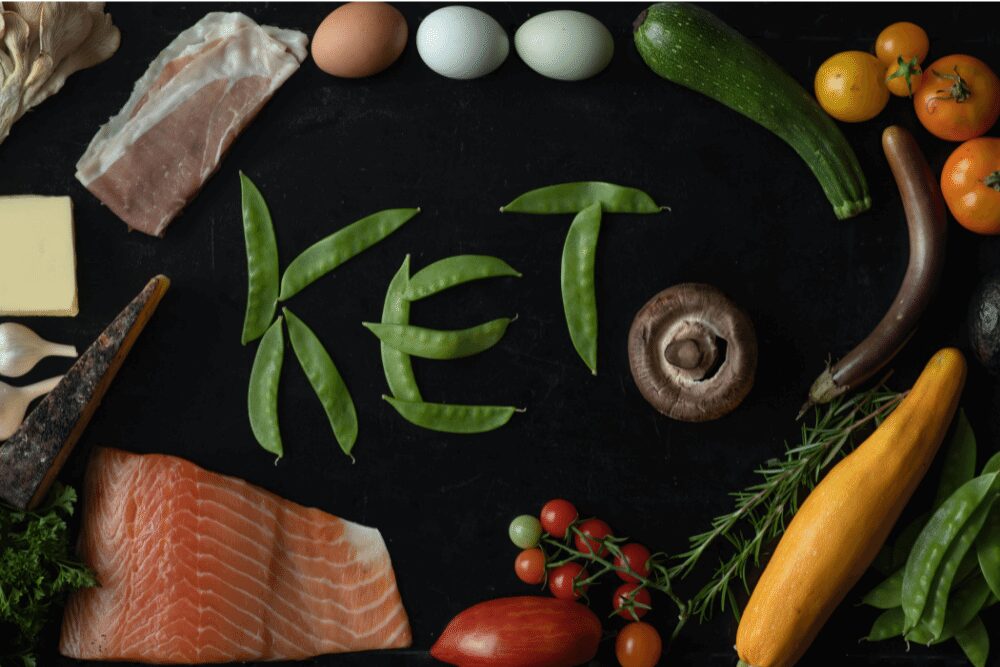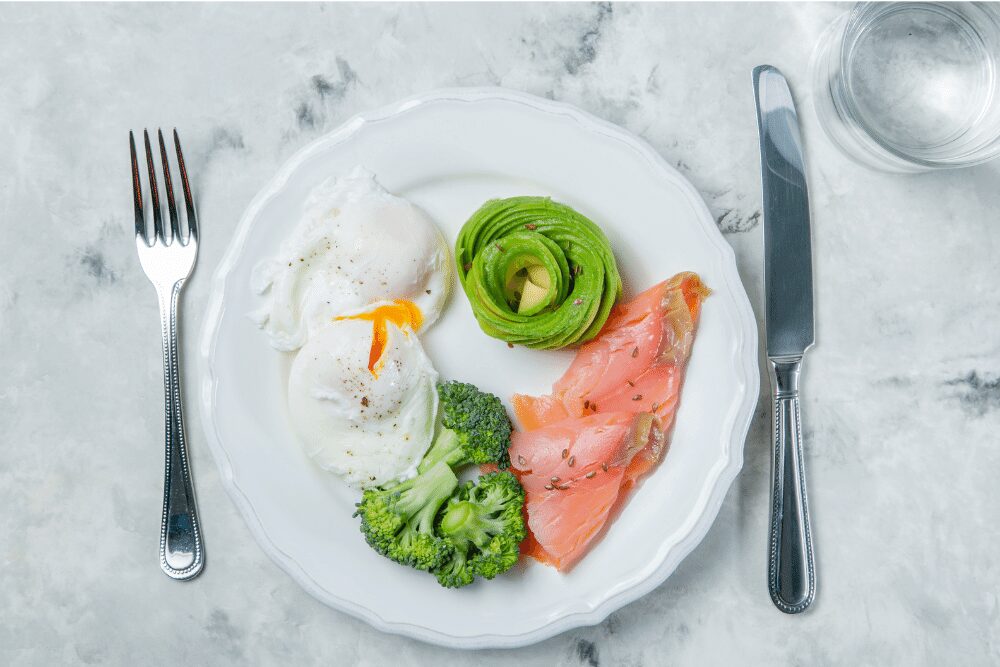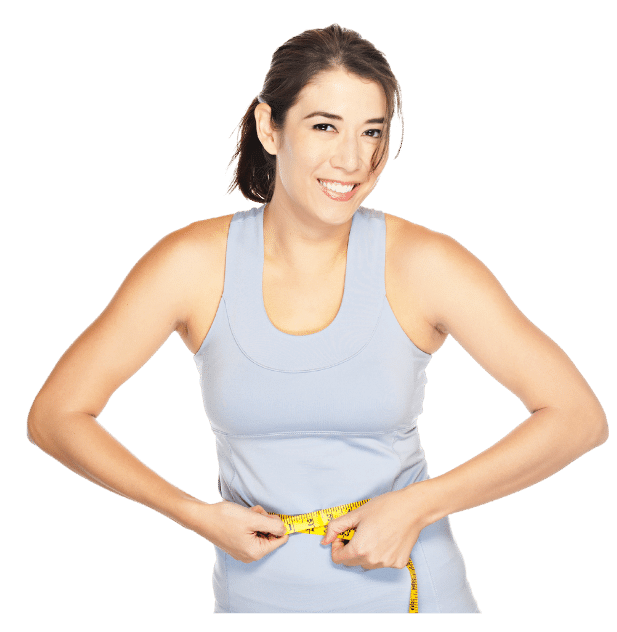How To Get Started On The Keto Diet [Julie’s Success]
I was excited when my Julie told me she wanted to start the keto diet. I had many clients following the diet for a while and had seen some great results.
But I knew it could be tough to get started, especially if you didn’t know where to begin.
I sat down with her and we went over everything she would need to do to get started.
We made a grocery list of all the foods she could eat, and I showed her how to track her macros.
I also recommended that she join a keto support group on Facebook, where she could find recipes and tips from other people who were following the diet.
Julie was nervous about cutting out carbs, but she was excited, and I knew she would do great. She followed my advice and the next week she was already seeing results.
After a month of following the keto diet, her and I sat down together and reviewed her progress. She had lost 16 pounds in 30 days and felt great!
She told me that in one week alone, her husband lost 6 pounds on the keto diet!
They both looked amazing, and when I asked them what they thought of the keto diet, they said it was absolutely worth all the effort.
“I can’t believe how easy it is to eat this way,” Julie told me. “It’s not just about weight loss either. My skin looks better than ever and I have so much more energy every day.”
Julie is just one of dozens of clients I have helped start the keto diet. If you are thinking about starting the keto diet, here’s what you need to know:
What Is The Keto Diet?

The Keto (or Ketogenic) diet was designed in 1924 as a treatment for epilepsy, but it’s also become popular for weight loss and for improving overall health.
The keto diet involves changing the way your body uses energy. (Read our complete guide to losing weight on the Keto diet)
When you eat a high-carbohydrate diet, your body converts carbohydrates into glucose, which is then transported around the body and is particularly important in fueling brain function.
On a keto diet, however, the goal is to increase the amount of ketones your body produces, which is a fancy way of saying that the body will start turning to fat for its primary fuel source.
Your liver turns fatty acids into ketone bodies, or ketones, which are then used as fuel throughout the body – especially by the brain, which can’t run on fat but is able to run on ketones.
How To Start The Keto Diet
The initial goal when starting keto is to maintain your net carbs at 50 grams or less each day.
Net carbs are calculated by taking the total grams of carbohydrates in a food item and subtracting the number of fiber and sugar alcohols.
Read: What is ketosis?
On Julie’s keto diet, for example, she would aim to eat no more than 50 grams of net carbs per day. Her carbs came mostly from fibrous vegetables, and berries, which were her night time treat.
How To Reduce Your Carb Intake
- To reduce your carb intake, start by reading food labels carefully to find foods with the least amount of carbohydrates.
- Next, learn which foods are high in carbs but are also low in nutritional value. You can then stop eating those foods.
- And finally, learn which low-carb foods you like best to replace the high calorie foods you used to eat on a regular basis.
A drop in weight can make you feel instantly more confident – especially once you see your progress on paper.
Julie told me that before she started keto, she felt insecure about the way she looked in photos, but once she started seeing results, it gave her a lot of confidence.
What Foods Can You Eat On The Keto Diet?

Fortunately, there are tons of delicious foods you can eat on the keto diet.
Here’s a list of some of my favorite keto foods:
Meat & Seafood – Bacon, sausage, chicken, turkey burgers and just about any type of fish is fine for keto. The fish oil will also assist you in losing weight.
Cage-Free Eggs – The yolks are high in fat, so they’re a great option for keto cooking.
Low Carb Vegetables – Broccoli, spinach, cauliflower and zucchini are all okay for keto, along with many types of lettuce. We consider the fibrous vegetables to be fat burning vegetables.
Cheeses – Any cheese you want is fine on keto, as long as it’s full-fat.
Seeds & Nuts – Pumpkin seeds and almonds are both great choices for keto because they’re high in fat and low in carbs.
Healthier Oils – Butter, coconut oil and olive oil are all perfectly fine on keto. You can even use them to cook with.
Low Carb Fruits – Strawberries, raspberries and blueberries are all good options. Any berries you enjoy are fair game. Here’s our list of 17 fruits you can eat on the keto diet.
Sweeteners – Stevia and erythritol are both safe to use on keto and can be found at most grocery stores if you don’t have them already.
Here’s our list of Keto-Approved beverages.
What Are The Benefits Of The Keto Diet?
- Weight loss- research shows that a keto diet can lead to significant weight loss over the course of 3 months.
- Lower blood pressure and cholesterol levels, reducing risk for heart disease and stroke.
- Improve symptoms associated with Type 2 diabetes and epilepsy.
5 Steps To Weight Loss Success Starting The Keto Diet

Step 1: Know what you can eat on a keto diet. Be prepared by making a shopping list and knowing what foods you can/cannot eat.
Step 2: Go shopping! Make sure that the store has a high turnover rate for fresh items to ensure that what you’re purchasing is as close to what you’ll be eating when you get home.
Step 3: Head over to Amazon and pick up some books on keto dieting: Two great options: Primal Blueprint Quick and Easy Meals or The Keto Beginning.
They both give you great ideas for what to make and what to avoid.
Step 4: Make notes on what works for you. Keeping a food journal of what you eat and how you feel afterward is helpful feedback as you go through the process of adjusting to this new way of eating.
Step 5: Stay strong! Don’t get discouraged if the first week or two is a challenge. What’s important is that you’re moving in the right direction.
Stick with it and you’ll be rewarded with lifelong habits that encourage healthy weight loss, more energy throughout the day, increased focus, and better overall well-being.
